Amanda Geroy-Profile
Guru Brahma Guru Vishnu Guru Deva Maheshwara Guru Sakshat Parambrahma Tasmai Sri Gurave Namaha
Amanda is a devotee whose love for God finds expression in Odissi dance. While dancing, she comes before God with an offering of her body, mind, and heart.
Amanda has been a life-long artist. Excelling since childhood at visual arts, drama and dance, Amanda began her performing career at the age of six. She was involved in theater for many years and received a bachelor’s degree in theater from Northwestern University in Chicago where she also majored in Russian language and literature. She has performed throughout the U.S. in cities such as Nashville, Detroit, Chicago, San Francisco, Santa Fe and Off-Broadway in New York. She has received scholarships and honors for her excellence in theater and academics and was given the opportunity to study in Russia for eight months.
When she came to San Francisco, California in 1999, Amanda met her first Odissi guru, Guru Jyoti Rout. In Odissi Amanda found a perfect blend of devotion and artistry and she began immediately to devote herself whole-heartedly to studying the art form. In 2000 Amanda spent six months intensively studying in India under the direction of Guru Jyoti Rout and Guru Padma Charan Dehury. During that time Amanda also studied Odissi mardala drum and Oriya language and immersed herself in Oriya culture. Amanda followed up with a second trip to India in 2001 for two months. Amanda finally shifted to India on a long-term basis in December of 2006. Since that time she has been living in Orissa and training under the guidance of Srimati Sujata Mohapatra at Srjan, Bhubaneswar. She also currently studies mardala under eminent guru Banamali Maharana.
Amanda feels quite fortunate to have studied under two Odissi gurus who hail from different gharanas and who specialize in different aspects of the dance form. Guru Jyoti Rout is a master of abhinaya and a prolific choreographer. During the seven years under her tutelage, Amanda learned the subtle art of expression and gained her regard for dance as an act of devotional worship. In Srimati Sujata Mohapatra, Amanda finds the embodiment of dedication to the art form of Odissi, expressed in an unparalleled perfection of technique and a total union of life and art. Smt. Mohapatra's rigorous training standard and strict adherence to the perfection of her Guru’s style have enabled Amanda to open up to the very essence of Odissi with all of its nuances.
In America Amanda has had a prolific Odissi performing career. Productions with Jyoti Kala Mandir Performing Company include Sri Jagannath-2000, Buddha-2002, Konark-2003, Cosmic Dance-2004, Amrit Dhara-2005, and Avatar-2006. She had her solo debut or Ranga Puja performance in San Francisco in 2004 and other major solo performances in Phoenix, Atlanta, Santa Fe, Taos, San Jose and at the San Francisco Ethnic Dance Festival in 2005 and 2006. In addition to being a dancer, Amanda has written and narrated English scripts for numerous Odissi performances and was a teacher of Odissi and drama to children and adults.
Amanda made her India performing debut in 2006 at the 3rd International Odissi Festival in Bhubaneswar where she received critical acclaim for her portrayal of the character Hanuman. She continues to perform at festivals of classical dance throughout India.
Amanda firmly believes that in order to portray the subtleties of abhinaya in Odissi with authenticity and spontaneity it is necessary to spend enough time in the Oriya culture to understand the Oriya mind, heart, way of living, and most essentially the Oriya belief system, which is epitomized in the worship of Lord Jagannath. To this end, she continues to be based in Orissa where she can practice speaking Oriya and continue her sadhana in the company of the many wonderful Odissi dancers and musicians who make Orissa their home.
In her home country of America, Amanda has always aspired to touch the hearts of people from all walks of life, backgrounds and languages with the beauty and spiritual depth of Odissi. She truly believes that at the core all humans are one and that God is one. When an artist is able to touch that universal God through his or her art, all spectators become spellbound, all are uplifted and all find their own link to the great Oneness which is beyond the boundaries of name and form. It is Amanda’s heartfelt wish that all beings connect in whatever way to that One which is the source of peace and universal love.
Amanda Geroy,
Odissi Dancer ● Theater Artist
E-mail: amanda.geroy@gmail.com
“[At the 3rd International Odissi Festival in Bhubaneshwar] Of the dancers based abroad, Jyoti Rout’s disciple Amanda Geroy’s physical agility and bhava in Sankatvimochan Hanuman impressed.”
Leela Venkataraman
The Hindu, January 5, 2007
"At the 3rd annual Devdasi national dance festival hosted recently at Rabindra Mandap in Bhubaneswar, the amazing and intense abhinaya of American dancer Amanda Geroy (disciple of Sujata Mohapatra) left the audience spellbound."
The Hindu, October 24, 2008
“As the dancer got onto the stage and depicted the devotional character of Hanuman, at the 3rd International Odissi Festival in Bhubaneshwar, the huge audience refused to believe that the performer was a foreigner. Such was her intensity, involvement and perfection in portrayal of the character. And that was the distinct debut for Amanda Geroy, the American theatre actress turned Odissi dancer who is now based in Bhubaneswar.”
The Hindu, June 13, 2008
“It was an exciting experience for the audience to witness ‘Shiva Tandav’ - a duet dance recital by Amanda from the US and Maria from Peru both of whom are being trained at the city-based Guru Kelucharan Mohapatra’s Srjan dance institution. Incredible was Amanda’s exhibition of command over an oriental dance form and understanding of a mythological character like Lord Shiva.”
New Indian Express, May 16, 2008
“Amanda Geory from USA groomed at Srjan, showed complete dedication to the dance form through her performance. It is amazing to see a dancer of non-Indian origin, practicing Indian forms with complete austerity.”
Narthaki, January 28, 2008
“Amanda Geroy from California’s portrayal of the character of Hanuman left the audience spellbound.”
The Hindu, December 31, 2006
Major Odissi Performances
Solo
Apr, 2011 Unbound Beats, Ranjana Gauhar's Fest, New Delhi
Jan, 2011 Pragyoti Festival, Guwahati, Assam
Dec, 2010 National Odissi Festival, Bbsr, Orissa
Dec, 2010 1st Odissi Intl. Festival, Bbsr, Orissa
June, 2010, Guru Dakshina Utsav, Bbsr, Orissa
Sept, 2009 Int'l Theater Olympiad, KVK, Cuttack, Orissa
July, 2009 Raseswar Saikhia Award, Guwahati, Assam
June, 2009 Ekamra Utsav, Bbsr, Orissa
Feb, 2009 Neem Karoli Baba Ashram, Taos, USA
Nov, 2008 Shinjan Nrityalaya Festival, Kolkata
Sept, 2008 3rd National Devadasi Festival, Bbsr, Orissa
March, 2008 Neem Karoli Baba Ashram, Vrindavan, UP
March, 2008 Temple Dance Festival, Pushkar, Rajasthan
December, 2007 National Odissi Festival, Bbsr, Orissa
September, 2007 Rani Mandir, Rishikesh, Uttaranchal
June, 2007 Annapurna Theater, Puri, Orissa
December, 2006 3rd Int'l Odissi Festival, Bbsr, Orissa
July, 2006 Hindu Temple, Atlanta, USA
June, 2006 San Francisco Ethnic Dance Festival, USA
May, 2006 Lahar, touring, USA
September, 2005 Festival of India, Phoenix, USA
June, 2005 Lahar, touring, USA
June 2005 San Francisco Ethnic Dance Festival, USA
October, 2004 Mission Cultural Cntr, San Francisco, USA
July, 2001 Anglada’s Auditorium, Taos, USA
July, 2001 The Railyard, Santa Fe, USA
Group
June, 2010, Srjan troupe, KVK, Cuttack, Orissa
Dec, 2009 ICCR Tour with Sujata Mohapatra, USA
Jan, 2009 Sri, Menaka Thakkar Dance Co., Toronto, Canada
March, 2006 Amrit Dhara, touring, USA
April, 2005 Avatar, touring, USA
September, 2004 The Cosmic Dance, touring, USA
April, 2003 Konark, touring, USA
April, 2002 Buddha, touring, USA
November, 2000 Prem, Rabindra Mandap, Bbsr, Orissa
October, 2000 Great America, California, USA
March, 2000 Sri Jagannath, touring, USA
Tuesday, October 18, 2011
Interview with Amanda Geroy, Times of India
Q: Can you give your brief bio-data including qualifications and details of your Guru?
A: I have an undergraduate degree in Theater from Northwestern University in Chicago, USA. I began learning Odissi in 2000 with Guru Jyoti Rout in San Francisco. I am now continuing my study of Odissi in Bhubaneswar, Orissa at Srjan under the guidance of Smt. Sujata Mohapatra with whom I have been learning since 2006.
Q: How do you know about Odissi and what inspired you to learn the classical dance?
A: I am originally from New Mexico, and that is where I first heard about the Odissi dancer Jyoti Rout who had been invited to perform there by some members of the Neem Karoli Baba Ashram in Taos. My mother is herself a devotee of Neem Karoli Baba and I had been exposed to Indian philosophy and culture since my childhood. After completing my degree in theater, I was interested in learning Indian classical dance because I felt a natural affinity with the movements and was also eager to express my devotion by means of a performing art. Because Taos was a small town with no scope to learn Indian dance, I went to San Francisco. It was there that I came in contact with Guru Jyoti Rout and began studying with her. After seven years under her guidance, I wanted to take the next step forward by continuing my training in Orissa. When I attended a workshop with Smt. Sujata Mohapatra in San Francisco I knew that I could learn a lot from her. I have been lucky enough to be able to stay in Orissa since then and train directly under her guidance.
Q: Do you think learning in the east and performing in the western countries will help in abridging the cultural diversity between nations?
A: I certainly feel that all nations and people can learn a lot from one another. I appreciate the depth in Indian philosophy and in the Indian classical performing arts. These ideas and forms have been refined over many centuries. I hope that by performing and teaching Odissi in the west I will expose audience members and students to some of the ideas inherent in Indian philosophy. Dance and theater are a wonderful means for spreading ideas through stories which everyone can relate to. When the dancer has perfected the dance technique and achieved clarity of expression, everyone can appreciate the beauty and the universal meaning in the dance.
Q: As far as your international and national performances are concerned, how do you get exposed to other classical dances and learn from them?
A: I always learn a lot when I see other classical dance styles performed. I love to watch other artists. I am very lucky that I have had the opportunity to see some of the great Indian classical musicians and dancers of today onstage. I thank my teacher for providing me opportunities to watch and learn a lot.
Q: Odissi mostly goes to the mythological aspects wherein feelings, emotions, different body postures, etc. make huge sense along with local language narration for audiences’ better understanding. How do you make a balance of all these?
A: My teacher always says that dance is a language of the body. When I was studying theater, we learned many techniques for expressing different characters. Whereas in drama, we have the ability to express character and emotion through our voice, in dance we have only our body language, language of gestures and facial expressions. The lyrics of the song and familiar content of the mythological stories help the audience to understand when the audience knows the language. This of course does not help those who do not understand Sanskrit or Oriya or who are not familiar with Indian mythology. That is why there is an added challenge for dancers and audience members who are not born and brought up in Orissa. As dancers it is our responsibility to be very familiar with the meaning of the lyrics, with the mythological context of the story and with the body language and emotions of the characters. We also need enough command over the dance technique to express what we want to with clarity. The more clearly the dancer can visualize and depict the scenario, the more strongly the audience will experience the rasa in the dance.
Q: Staying away from home and learning the classical dance under the direct tutelage of your Guru(s), do you face obstacles in your way? If so, how do you handle such situations?
A: In one sense I am lucky to be learning dance away from home. I know that I have come here only for dance and I can focus on that completely. Of course, if I didn't have the total support of my family members back home, it would not be possible for me. I am always grateful to my parents, without whom I could not have pursued Odissi. When I face challenges, I always remember the great difficulties and challenges faced by my Guru and my Guru's Guru. When they have gone through so much hardship to promote Odissi and to perfect the dance form in the face of many obstacles, how can I complain? How small my challenges become!
Q: While performing on the stage where the classical dance was born, how do you feel?
A: I feel grateful to have the opportunity to dance here, and I feel very small before many incredibly talented artists. And I feel happy when people appreciate my dance. It gives me encouragement to continue to practice.
Q: Odissi dance has many legendary Gurus. Who amongst them you admire the most? If so, why?
A: I definitely admire Guru Kelucharan Mohapatra the most. I never had a chance to meet him, study under him or see him perform, but I have so much respect for his work. He was really a brilliant artist and he definitely lives on in his students.
Q: If one Odissi Guru you would prefer to become his/her disciple but could not, what void will such a missing opportunity will create in your mind?
A: I often regret that I could never see Guru Kelucharan Mohapatra live on stage. That is something that would have been a priceless experience in my life. That is my biggest regret in Odissi.
Q: How do your government promote cross border cultural programs? Is there any financial assistance given to you?
A: There is not very much government support for cross-cultural programs and there are many many artists and art forms from all parts of the world in the USA, so there is not enough support for everyone. I am not receiving any financial assistance from my government.
Q: What would you do to promote Odissi in your country and other countries?
A: I think that it is important to find creative ways to help people understand the aesthetics and the content of Odissi performances. Through lecture-demonstrations, question and answer sessions, workshops, meet the artist events, performances, etc. people learn about Odissi. In the USA Indian classical dance is mostly confined to the Indian community, but I hope to see appreciation for it spread across to other communities of art lovers.
Q: Any research or new addition like in choreography, you have planned in your performance?
A: Now I am focused on perfecting my technique and learning the repertoire of Guru Kelucharan Mohapatra. I think that there are a lot of riches in Indian philosophy and mythology that can provide ample material for new creative work in the future.
Q: Your message to the audience and new entrants?
A: I would hope that audience members and dancers learn as much as possible about the art form and try to understand it fully in the context of its history, the philosophical and mythological content of the dance and the aesthetic theory behind it. The more one tries to reach the depth of understanding, the more one can appreciate the art form and the more it will continue to grow from a strong base.





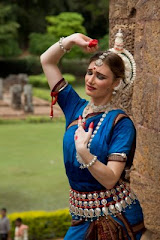

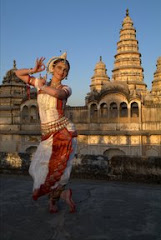

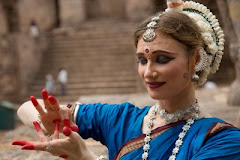

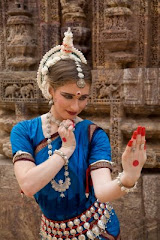

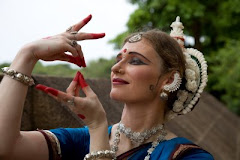
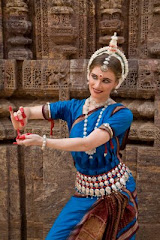
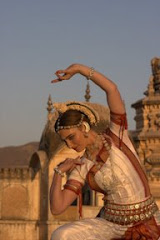
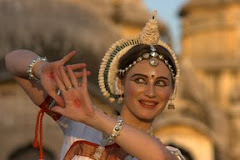
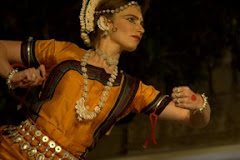

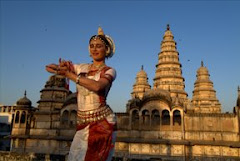
No comments:
Post a Comment